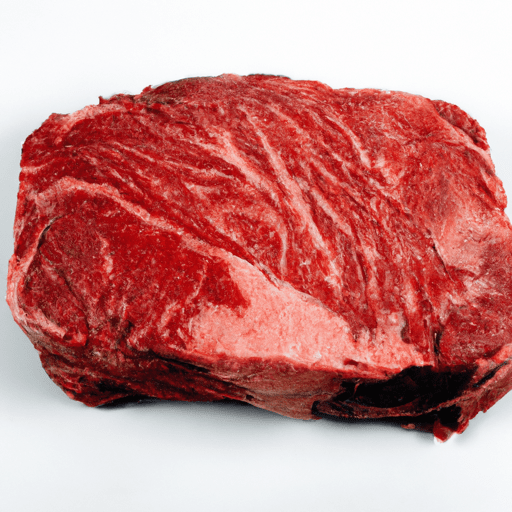The Delectable Charm of Buffalo Steak: A Guide to a Unique Culinary Experience
The world of steaks is a captivating one, offering a delightful variety of cuts and flavors. Among the choices available, buffalo steak stands out as a remarkable option for those seeking a blend of robust taste and impressive nutritional value. In this blog post, we will explore the mouthwatering characteristics of buffalo steak, its versatile uses in culinary creations, its exceptional nutritional benefits, and uncover some interesting facts about this remarkable meat.
Discover the Taste
Buffalo steak boasts a distinct flavor that is unlike any other. It exhibits a rich, savory taste with a slightly sweet undertone, making it a delight for steak enthusiasts. This unique combination of flavors is a result of the animal’s natural diet of nutrient-dense grasses and herbs, which imparts a deliciously earthy aroma to the meat. Whether grilled to perfection or seared in a cast-iron skillet, buffalo steak offers a tantalizing experience for your taste buds.
Versatility in Cooking
Buffalo steak’s versatility allows it to shine in a variety of culinary endeavors. Its rich, bold taste pairs well with both traditional and contemporary flavor profiles. Whether served as a classic steak dinner or incorporated into mouthwatering stews, stir-fries, or burgers, you can rely on buffalo steak to add a unique twist to your favorite recipes. Its tender texture and robust taste make it a terrific choice for marinating, grilling, roasting, or pan-searing. With buffalo steak, the possibilities are endless, and no matter how you choose to prepare it, a delicious meal is guaranteed.
Nutritional Powerhouse
Beyond its exceptional taste, buffalo steak offers an impressive array of nutritional benefits. It is notably leaner than beef, containing less fat and cholesterol. This makes it an ideal choice for individuals seeking a healthier alternative without compromising on flavor. Additionally, buffalo steak is an excellent source of protein, iron, and essential omega-3 fatty acids. Its nutrient-dense composition promotes muscle growth, aids in maintaining a healthy weight, and supports overall well-being. Indulging in buffalo steak allows you to savor a delightful meal while nourishing your body with essential nutrients.
A Glimpse into History
Buffalo steak’s existence in the culinary world extends far back in time. Native American tribes, particularly those of the Great Plains region, have a long-standing history of utilizing buffalo as a primary source of sustenance. The buffalo provided them with everything they needed for survival, including meat, hides, bones, and tools. Today, buffalo steak continues to honor this rich heritage, serving as a testament to the culture and traditions of the indigenous peoples. By enjoying buffalo steak, you not only savor a delicious meal but also pay homage to the history and legacy deeply intertwined with this remarkable meat.
Interesting Facts
To leave you with a few fascinating facts about buffalo steak, consider the following:
- Buffalo steak is often referred to as “red meat on a diet” due to its lean composition.
- Buffalo once roamed in vast herds across the American plains, and their population has thrived thanks to conservation efforts.
- The term “buffalo” is often used interchangeably with “bison,” but they are distinct species.
- Buffalo steak is available in various cuts, including ribeye, tenderloin, sirloin, and flat-iron, each offering its own unique characteristics and flavor profile.
Conclusion
Buffalo steak is a true culinary gem that captivates with its unparalleled taste, versatility, and remarkable nutritional benefits. Whether you are a seasoned steak enthusiast or an adventurous foodie seeking new flavors, buffalo steak is an excellent choice that will tantalize your senses. Its rich history and cultural significance only add to the allure of this extraordinary meat. So, go ahead and embark on a delightful gastronomic journey with a succulent buffalo steak – a delicious meal that embraces both tradition and innovation.
Note: When sourcing buffalo steak, ensure it is from a reputable and sustainable producer committed to preserving the buffalo population and their natural habitat.
Buffalo Steak
Origin: Buffalo steak, also known as bison steak, comes from the American bison (Bison bison). Native to North America, these large, shaggy-haired mammals were once found in vast numbers across the Great Plains region.
Common Uses: Buffalo steak is commonly used as a high-quality alternative to beef steak. It is often prepared by grilling, broiling, or pan-searing to achieve a delicious, tender texture. Buffalo steak can be enjoyed on its own or incorporated into various recipes such as stir-fries, stews, or even served in sandwiches.
Nutritional Benefits: Buffalo steak is known for its rich flavor and nutritional benefits. It is a lean meat option that contains less fat and fewer calories compared to beef. Buffalo steak is a good source of high-quality protein, iron, and various essential vitamins and minerals, including zinc, selenium, and vitamin B12.
Unique Properties: Buffalo steak has a unique taste and texture. It is often described as having a slightly sweeter and more robust flavor compared to beef. The meat is typically lean, which can result in a tender yet slightly firmer texture.
Historical Significance: The American bison played a significant role in the history of North America. Native American tribes relied on bison as a primary food source, utilizing every part of the animal for various purposes. The arrival of European settlers led to the near extinction of bison due to hunting and habitat loss. However, conservation efforts have helped restore the bison population in North America, and now buffalo meat, including buffalo steak, is enjoyed as a reminder of this historically important animal.




Use the share button below if you liked it.
It makes me smile, when I see it.